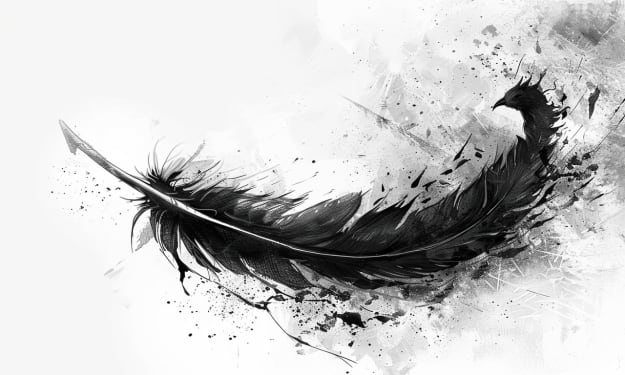The Curse of the Black Diamond
The Legend, History, and Cautionary Tale of the Black Diamond's Curse

The Curse of the Black Diamond has long been a topic of fascination and intrigue among historians and treasure hunters alike. Legend has it that the diamond, originally mined from the Golconda mines in India, was cursed by a group of Hindu priests who were angered by its theft. The curse is said to bring misfortune and death to anyone who possesses the diamond.
The history of the Black Diamond can be traced back to the 17th century when it was acquired by the Dutch East India Company. The diamond was then sold to King Louis XIV of France and was named the French Blue. The diamond was later stolen during the French Revolution and disappeared for several years.
It resurfaced in 1812 in the possession of a London diamond merchant named Daniel Eliason. He sold the diamond to King George IV of England, who had it re-cut and set in a new piece of jewelry. The diamond was now a magnificent 45.52 carat blue diamond, and it became known as the Hope Diamond, after its next owner, Henry Thomas Hope.
It was during the ownership of the Hope family that the curse of the Black Diamond began to take hold. Family members began to suffer from misfortune and financial ruin, and many believed it was because of the curse of the diamond. The diamond was eventually sold to Pierre Cartier in 1910, who sold it to Evalyn Walsh McLean, a wealthy American socialite.
McLean's ownership of the diamond was plagued by tragedy. Her son was killed in a car accident, her daughter died of an overdose, and her husband ran off with another woman. McLean herself died in 1947, and the diamond passed on to her creditors.
The diamond was eventually acquired by the Smithsonian Institution in 1958 and has been on display in the National Museum of Natural History in Washington, D.C. ever since. But even while in the possession of the Smithsonian, the curse of the Black Diamond continued. The museum received numerous letters from people claiming that the diamond had caused them bad luck and misfortune.
While there is no scientific evidence to support the existence of curses, the stories surrounding the Black Diamond continue to capture the imagination of people around the world. The diamond's deep blue color, size, and history have made it one of the most famous diamonds in the world.
The legend of the curse of the Black Diamond has inspired countless books, movies, and TV shows. It has also fueled the imaginations of treasure hunters who seek to uncover the truth behind the curse and the diamond's mysterious past.
But beyond the legend and the fascination, the story of the Black Diamond serves as a cautionary tale about the dangers of greed and the consequences of stealing from other cultures. The theft of the diamond from the Golconda mines in India is just one example of the exploitation of natural resources and the people who live in the countries where those resources are found.
The curse of the Black Diamond is a reminder of the importance of respecting other cultures and their history. It is also a reminder of the power that stories can hold and the impact they can have on people's lives.
In conclusion, the curse of the Black Diamond is a fascinating and mysterious legend that has captured the imagination of people around the world for centuries. While the existence of curses remains unproven, the story of the diamond serves as a cautionary tale about the dangers of greed and the importance of respecting other cultures and their history. The legend of the Black Diamond may never be fully understood, but its power to captivate and intrigue will continue to endure for generations to come.
About the Creator
Enjoyed the story? Support the Creator.
Subscribe for free to receive all their stories in your feed. You could also pledge your support or give them a one-off tip, letting them know you appreciate their work.






Comments
There are no comments for this story
Be the first to respond and start the conversation.